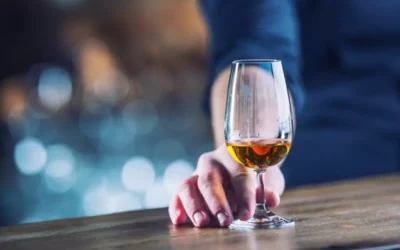But doping for sports isn’t one of the uses the drugs are approved for. In conclusion, APED use among the general population appears to be escalating into a major public health concern. The psychosocial history should include, in addition to inquiring about the use of alcohol, smoking, and drugs, asking about the use of PEDs in all shapes and forms, including nutritional supplements.

Performance-enhancing drugs: Know the risks

I’m going to disappoint a lot of people with this information, but it’s the truth. And it was at that moment, I was like, wow, I’ve been protecting this culture, this “omerta,” trying to be the good, old fraternity mate not telling the secrets. But then I realized, wow, what an ugly situation this has been and ugly situation that we all went through.
- Methadone is an opioid that doctors may prescribe to people experiencing pain for whom other opioids do not work or to those with a high risk of developing addiction.
- All panelists volunteered their time to prepare this Scientific Statement without any financial remuneration.
- The main reason people misuse anabolic steroids is to increase lean muscle mass when using them in conjunction with weight training.
Other side effects of Methadone
One supplement that’s popular with athletes is called creatine monohydrate. Learn how these drugs work and how they can have effects on your health. Methadone withdrawal is not usually dangerous for people in reasonably good health, though it can make a person feel very ill. The stages of methadone withdrawal depend on the dosage and how much of the medication a person takes. It is also a medication that can help ease the symptoms of withdrawal from other opioids.
- Working out is usually a significant aspect of a steroid use disorder.
- Notably, one recent case series has documented 10 cases of focal segmental glomerulonephritis among frequent AAS users (313).
- As with any anabolic steroid use, withdrawal from testosterone use may lead to depression, and even suicide.
- The presence of an abnormal concentration of a hormone, its metabolites, relevant ratios, or markers in your sample is deemed to contain a prohibited substance unless you can demonstrate the concentration was due to a physiological or pathological condition.
- Although until recently this practice only involved elite athletes, scientific evidence shows that the use of doping outside elite sports has been steadily rising as an emerging public health challenge (58).
- In 2004, the Anabolic Steroid Control Act amended the Controlled Substances Act and expanded its definition of anabolic steroids.
Adverse Health Consequences of Performance-Enhancing Drugs
GH excess in patients with acromegaly is characterized by acral enlargement, excessive sweating, hypertension, congestive heart failure, cardiomyopathy, sleep apnea, arthropathy, carpal tunnel syndrome, increased insulin resistance, neuropathy, diabetes, and increased mortality (376). Steroids are often used in patterns called “cycling.” This involves taking multiple doses of steroids over a specific period of time, stopping for a period, and starting again. Prohibited stimulants, like methylhexanamine, that are often found in contaminated https://ecosoberhouse.com/ pre-workout supplements, as well as permitted stimulants, like caffeine, can both result in negative health effects if abused. At low doses, stimulants can lead to increased perspiration, shaking, inability to focus, and sleep loss, as well as low appetite and dehydration. In higher doses, stimulants can also lead to more severe health effects, such as rapid heart rate and high blood pressure. In combination with exercise, stimulants can take a normal heart beating like this, to a heart that’s beating dangerously fast.

Keep reading to learn more about methadone and methadone withdrawal. When using methadone, you may experience side effects of the medication, even during a withdrawal period. In some cases, your healthcare team may prescribe other medications to help combat the symptoms of withdrawal. If you have discomfort after suddenly stopping methadone or decreasing your dose, you may be experiencing withdrawal. You may either have to resupply the substance or let your body go through the withdrawal process while it creates a natural state of balance again.
Adverse Health Consequences of Performance-Enhancing Drugs: An Endocrine Society Scientific Statement
Androgen precursors are either inactive or weak androgens that the body converts into potent androgens. The widespread, unregulated sale of dietary supplements on the Internet has greatly increased the number of anabolic Performance Enhancing Drugs steroids available. Of even greater concern is the introduction of synthetic anabolic steroids such as 17-desmethylstanozolol, methylclostebol, and methyltrienolone into the market as dietary supplements.
I didn’t know if I could die from that, and sure enough, from the research that I’ve found out, that, yeah, it could have been really bad. After the 2003 season, which was probably my most successful season on record, I had great results, had a big Tour de France. I got back stateside after the season was over, it was in my off-season, and I realized I was having a hard time just getting out of bed, no motivation. I mean, I thought about suicide, I drank to just check out at some points.
It is difficult to estimate the prevalence of steroid misuse in the United States because many national surveys that ask about drug use do not include questions about steroids. However, data on steroid misuse among young students are available from the NIDA-supported Monitoring the Future Survey. In addition to dependence on the substance, many steroid users become addicted to physical fitness.
FIND TREATMENT:
Why is steroid use rising among male bodybuilders? – BBC.com
Why is steroid use rising among male bodybuilders?.
Posted: Sun, 10 Apr 2022 07:00:00 GMT [source]
This increase thickens the blood, making it difficult for the heart to pump. The result is a higher risk of life-threatening diseases including stroke, heart disease, and cerebral or pulmonary embolisms. The abuse or misuse of EPO can also trigger serious autoimmune diseases, causing the body’s immune system to attack healthy cells. Blood doping through transfusions also increases the risk of infectious disease, such as HIV/AIDS or hepatitis, which is when the liver becomes dangerously inflamed.




